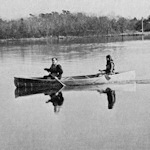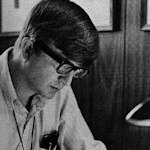 |
 |
 |
 |
 |
 |
Stockton proposed to make available to state college students at state college prices the kind of interdisciplinary and individualized liberal arts instruction initially developed in America for the children of the ruling elite and, in the contemporary world, usually reserved for students at the most exclusive and expensive private liberal arts colleges.
In other words, what was arguably the best and most expensive undergraduate education in the country was to be delivered to the students who most needed it but who also could least afford it and (as a number of early critics argued) might also be the least prepared for it and the least interested in it. State college students were known to range from very well-prepared to very poorly prepared, but the average level of academic preparation was likely to be a good deal lower than that which could be assured by rigorous admissions standards for entering students at exclusive liberal arts colleges. And the economic situation of many state college students and their parents was likely to place them generally in the career-oriented camp. They were unlikely to be attracted to a college that preached the civilizing impact of liberal arts education unless it could be demonstrated that such an education would also contribute directly to career success and economic gain.
This attempt to combine what was in the early days virtually open admission access with high-powered education once admitted, to combine working-class career education with upper-class liberal arts education, was exquisite 1960s stuff—noble to the core in concept but also audacious and likely to prove difficult in the implementation phase—as we and a few other like-minded colleges of the Sixties were soon to discover.
It was my distinct impression, as the first-year faculty assembled in fall 1971, that those of us who had packed our bags and come running to serve the Stockton Idea were attracted both by the nobility of Stockton's educational goals and by the near impossibility of achieving them. We were overwhelmingly young. It was the end of the Sixties. And we could still hear the ringing words of John Kennedy, speaking of the quest to put men on the moon: "We choose to do these things, not because they are easy but because they are ha-a-a-ard" (New England for "hard").
We arrived at the College (temporarily housed in the collapsing boardwalk Mayflower Hotel) to discover that the administrative planning team , which had spent the previous year constructing an initial plan for Stockton, had anticipated many of the difficulties associated with Stockton's declared and very ambitious mission and had built distinctive structures into the College plan designed to give us a fighting chance of actually making elite liberal arts education work for a career-oriented state college student body. All of those distinctive structures were compelled by hard realities to evolve during the first ten years of the College. But they are all still here and are all still central to what makes Stockton different, and arguably better, than most other undergraduate institutions. I have focused on four of these pillars of the Stockton Idea.
What follows in this book is a summary of the early thinking (as I understood it) behind each of these structures, of their evolution during the first ten years of the College, and (much more briefly) of their current status both at Stockton and in contemporary American higher education—as this lovely little college approaches its fortieth birthday.
Inside The Stockton Idea:
| Elite Education for State College Students William T. Daly |
||
Back to Home |
Purchase the Complete Book Purchase the Commemorative E-zine Issue |
Preview Next Chapter |